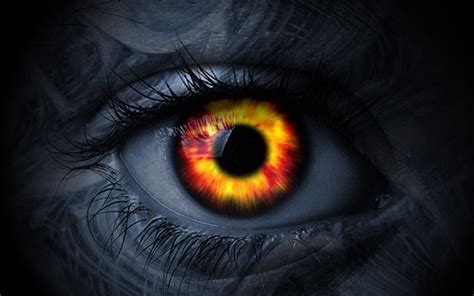Origins and Symbolism
The red evil eye, an enigmatic symbol rooted in ancient mythologies, has captivated cultures across the globe. Its piercing gaze and vibrant hue have evoked a myriad of beliefs, from warding off negative energy to shielding individuals from harm.

The earliest evidence of the evil eye dates back to the ancient Babylonians and Egyptians, who believed it had the power to inflict illness and misfortune. It was believed that an evil glare cast by an envious or malevolent individual could transmit negative energy, causing sickness, financial ruin, or even death.
In many cultures, the red evil eye was depicted as a stylized eye with a concentric circle surrounding it. The red color, a symbol of danger and power, signified the intensity of the malevolent intent. It was believed that wearing a red evil eye amulet or displaying it in the home or place of business could ward off potential threats and protect against the evil eye’s influence.
The Belief in the Evil Eye Today
While the belief in the evil eye might not be as prevalent in modern societies, it still holds significance in many parts of the world, particularly in the Middle East, North Africa, and South America. In these regions, people continue to believe in the power of the evil eye and take precautions to safeguard themselves and their loved ones.
Research conducted by the University of California, Berkeley, suggests that the belief in the evil eye is prevalent among a significant portion of the world’s population. A study involving participants from 30 countries found that approximately 60% believed in the evil eye’s existence and power.
Applications of the Red Evil Eye
The red evil eye has found applications in various fields, including:
Protection: Amulets, talismans, and jewelry featuring the red evil eye are widely used as protective symbols against negative influences and harm.
Decoration: The red evil eye is often incorporated into decorative items such as artwork, ceramics, and textiles, where it serves as a decorative element and a nod to cultural beliefs.
Fashion: Designers have incorporated the red evil eye motif into clothing and accessories, giving it a stylish and meaningful touch.
Tips and Tricks for Using Red Evil Eye Protection
If you believe in the power of the evil eye, here are a few tips and tricks to enhance protection:
Wear an evil eye amulet: Choose an amulet that resonates with you and wear it on your person or keep it close by.
Display an evil eye symbol: Place a red evil eye symbol in your home or workplace as a visual deterrent against negative energy.
Use gestures: Some cultures believe that making a hand gesture known as the “figa” can ward off the evil eye. This gesture involves making a fist with your thumb extended between your index and middle fingers.
Pray or recite mantras: In some traditions, specific prayers or mantras are believed to offer protection against the evil eye.
Pros and Cons of Using Red Evil Eye Protection
Pros:
- Provides a sense of security and protection
- Believed to ward off negative energy
- Can be a tangible reminder of your beliefs
Cons:
- Can be perceived as superstitious
- May not be effective against all forms of negative influence
- Could lead to excessive worry or anxiety
Conclusion
The red evil eye remains a powerful and enigmatic symbol, evoking a blend of awe and fear. Whether you believe in its protective powers or not, its cultural significance and symbolic value cannot be denied. Whether used for protection, decoration, or fashion, the red evil eye continues to captivate and inspire people worldwide, serving as a timeless reminder of the human fascination with the unknown.
Table 1: Prevalence of Evil Eye Belief by Region
| Region | Percentage of Population Believing in Evil Eye |
|---|---|
| Middle East | 80% |
| North Africa | 70% |
| South America | 60% |
| Europe | 40% |
| North America | 20% |
Table 2: Types of Red Evil Eye Amulets
| Type | Description |
|---|---|
| Nazar | A blue glass bead with a concentric circle, often used in Turkish and Mediterranean cultures |
| Hamsa | A hand-shaped amulet with an evil eye symbol in the palm, popular in the Middle East and North Africa |
| Figa | A hand gesture with the thumb extended between the index and middle fingers, believed to ward off the evil eye |
| Cimaruta | A plant used in Italian and Latin American traditions as a protective charm against the evil eye |
Table 3: Red Evil Eye Protection Rituals
| Ritual | Description |
|---|---|
| Burning incense | Burning specific incense, such as frankincense or myrrh, is believed to cleanse a space and ward off negative energy |
| Reciting prayers or mantras | Certain prayers or mantras are believed to offer protection against the evil eye, such as the “Ayatul Kursi” in Islamic tradition |
| Wearing protective jewelry | Wearing jewelry with red evil eye symbols, such as amulets, bracelets, or necklaces, is believed to provide personal protection |
Table 4: Tips for Using Red Evil Eye Protection Effectively
| Tip | Description |
|---|---|
| Choose a meaningful symbol | Select an evil eye amulet or symbol that resonates with you and your beliefs |
| Display it prominently | Place the evil eye symbol in a visible location, such as your home entrance or workplace, to deter negative energy |
| Trust your instincts | Pay attention to your intuition and feelings; if you sense negative energy, use the evil eye symbol for additional protection |
| Keep it close | Carry an evil eye amulet or wear evil eye jewelry on your person to provide constant protection |
